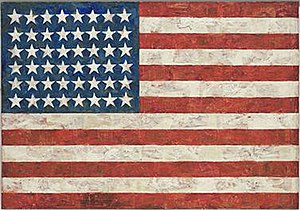
The national flag of the United States, often referred to as the American flag or the U.S. flag, consists of thirteen equal horizontal stripes of red alternating with white, with a blue rectangle in the canton, referred to as the union and bearing fifty small, white, five-pointed stars arranged in nine offset horizontal rows, where rows of six stars alternate with rows of five stars. The 50 stars on the flag represent the 50 U.S. states, and the 13 stripes represent the thirteen British colonies that declared independence from Great Britain, which they went on to secure by their victory in the American Revolutionary War.

René François Ghislain Magritte was a Belgian surrealist artist known for his depictions of familiar objects in unfamiliar, unexpected contexts, which often provoked questions about the nature and boundaries of reality and representation. His imagery has influenced pop art, minimalist art, and conceptual art.
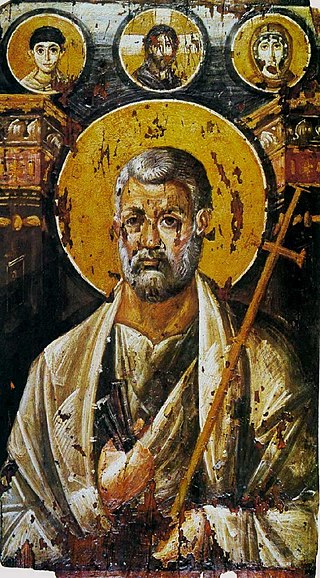
Encaustic painting, also known as hot wax painting, is a form of painting that involves a heated wax medium to which colored pigments have been added. The molten mix is applied to a surface—usually prepared wood, though canvas and other materials are sometimes used. The simplest encaustic medium could be made by adding pigments to wax, though recipes most commonly consist of beeswax and damar resin, potentially with other ingredients. For pigmentation, dried powdered pigments can be used, though some artists use pigmented wax, inks, oil paints or other forms of pigmentation.
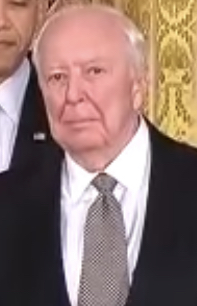
Jasper Johns is an American painter, sculptor, draftsman, and printmaker. Considered a central figure in the development of American postwar art, he has been variously associated with abstract expressionism, Neo-Dada, and pop art movements.
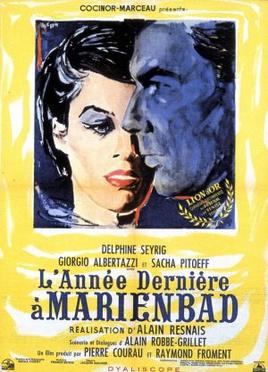
Last Year at Marienbad, released in the United Kingdom as Last Year in Marienbad, is a 1961 French New Wave film directed by Alain Resnais from a screenplay by Alain Robbe-Grillet.

Frank Philip Stella was an American painter, sculptor, and printmaker, noted for his work in the areas of minimalism and post-painterly abstraction. He lived and worked in New York City for much of his career before moving his studio to Rock Tavern, New York. Stella's work catalyzed the minimalist movement in the late 1950s. He moved to New York City in the late 1950s, where he created works which emphasized the picture-as-object. These were influenced by the abstract expressionist work of artists like Franz Kline and Jackson Pollock. He developed a reductionist approach to his art, saying he wanted to demonstrate that for him, every painting is "a flat surface with paint on it—nothing more", and disavowed conceptions of art as a means of expressing emotion. He won notice in the New York art world in 1959 when his four black pinstripe paintings were shown at the Museum of Modern Art. Stella was a recipient of the National Medal of Arts in 2009 and the Lifetime Achievement Award in Contemporary Sculpture by the International Sculpture Center in 2011.

Visual art of the United States or American art is visual art made in the United States or by U.S. artists. Before colonization, there were many flourishing traditions of Native American art, and where the Spanish colonized Spanish Colonial architecture and the accompanying styles in other media were quickly in place. Early colonial art on the East Coast initially relied on artists from Europe, with John White the earliest example. In the late 18th and early 19th centuries, artists primarily painted portraits, and some landscapes in a style based mainly on English painting. Furniture-makers imitating English styles and similar craftsmen were also established in the major cities, but in the English colonies, locally made pottery remained resolutely utilitarian until the 19th century, with fancy products imported.

Milton Ernest "Robert" Rauschenberg was an American painter and graphic artist whose early works anticipated the Pop art movement. Rauschenberg is well known for his Combines (1954–1964), a group of artworks which incorporated everyday objects as art materials and which blurred the distinctions between painting and sculpture. Rauschenberg was primarily a painter and a sculptor, but he also worked with photography, printmaking, papermaking and performance.

Alain Robbe-Grillet was a French writer and filmmaker. He was one of the figures most associated with the Nouveau Roman trend of the 1960s, along with Nathalie Sarraute, Michel Butor and Claude Simon. Robbe-Grillet was elected a member of the Académie française on 25 March 2004, succeeding Maurice Rheims at seat No. 32. He married Catherine Robbe-Grillet.

Robert Ryman was an American painter identified with the movements of monochrome painting, minimalism, and conceptual art. He was best known for abstract, white-on-white paintings. He lived and worked in New York City.
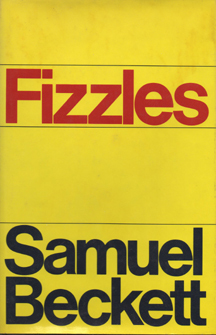
The Fizzles are eight short prose pieces written by Samuel Beckett:

The Betsy Ross flag is an early design for the flag of the United States, which is conformant to the Flag Act of 1777 and has red stripes outermost and stars arranged in a circle. These details elaborate on the 1777 act, passed early in the American Revolutionary War, which specified 13 alternating red and white horizontal stripes and 13 white stars in a blue canton. Its name stems from the story, once widely believed, that shortly after the 1777 act, upholsterer and flag maker Betsy Ross produced a flag of this design.
A combine painting or Combine is an artwork that incorporates elements of both painting and sculpture. Items attached to paintings might include three-dimensional everyday objects such as clothing or furniture, as well as printed matter including photographs or newspaper clippings.

Three Flags is a painting by American artist Jasper Johns, from 1958. It is held in the Whitney Museum of American Art, in New York.
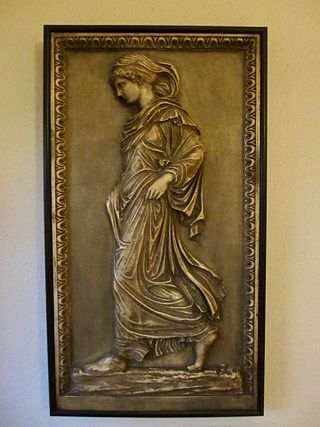
Gradiva is a novel by Wilhelm Jensen, first published in instalments from June 1 to July 20, 1902 in the Viennese newspaper "Neue Freie Presse". It was inspired by a Roman bas-relief of the same name and became the basis for Sigmund Freud's famous 1907 study Delusion and Dream in Jensen's Gradiva. Freud owned a copy of this bas-relief, which he had joyfully beheld in the Vatican Museums in 1907; it can be found on the wall of his study in 20 Maresfield Gardens, London – now the Freud Museum.

Map is a 1961 oil-on-canvas painting by Jasper Johns. It represents the overall proportions and shapes of the states of the United States and parts of Mexico and Canada, although executed with a more "energetic application of paint" than found in cartography. The names of the states and ocean areas are stencilled.

White Flag is an encaustic painting by the American artist Jasper Johns. Created in 1955, soon after his first flag painting, entitled simply Flag, it was the first painting by Johns to be acquired by the Metropolitan Museum of Art, in New York, bought from the artist in 1998. The price was undisclosed but experts estimated its value at the time as more than $20 million.

Tatyana Grosman was a Russian American printmaker and publisher. She founded Universal Limited Art Editions.

Washington Crossing the Delaware is the title of three 1851 oil-on-canvas paintings by the German-American artist Emanuel Leutze.
